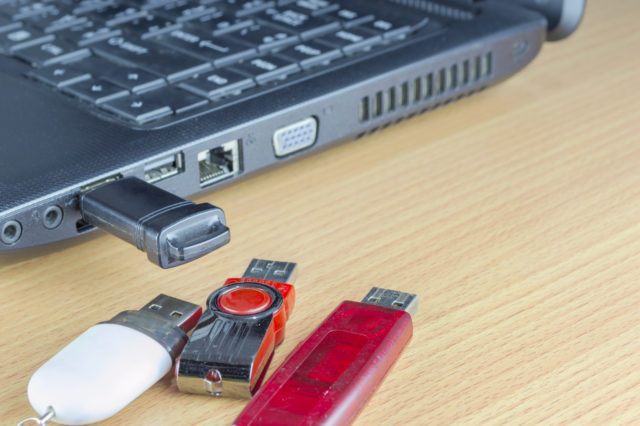
Cybersecurity was announced as one of the biggest threats to businesses this year, with owners stressing about the detrimental effects it would have. Flash Drive Security is something that businesses need to consider.
The fastest-growing form of crime on the Earth, there’s no wonder that people are hooking up cybersecurity measures left, right and center.
But, guys, here’s the thing: when it comes to IT threats, you need to look at what’s happening on the inside, too – and when I say inside, I mean inside your business.
According to Dial a Nerd, internal threats are also on the increase as employees fail to follow good security measures – like that scene in Mr. Robot which saw a musician give away free CDs that would infiltrate people’s PCs and take control.
Scary stuff, huh? So Dial a Nerd jotted down a few internal threats that many people have no idea about and, guys, just be careful out there.
Always channel your inner Zuckerberg.
Flash Drive Security
The humble flash drive poses a significant risk to the business and can infect your network as easy as a visitor giving a service pitch on the boardroom PC using a presentation from a USB stick:
An example is how a security firm loaded 20 USB drives with password-stealing malware and scattered them in the parking lot and other likely locations outside a target company. Fifteen of the drives were found by employees, who plugged them in to see what was on them. It only took a few hours for the security firm to get a steady stream of passwords and other critical data.
Peer-to-Peer (P2P) file-sharing
Although unauthorised file-sharing programmes are often forbidden by company policy, many businesses are not even aware that staff have these applications installed on their computers:
An example of such an application is BitTorrent (or any other torrent software for that matter). Cyber-criminals have started using these P2P programmes to compromise and take over networked computers. And then there is the small matter of P2P being one of the primary methods of illegally distributing copyrighted material. Imagine the cost (and embarrassment) of the authorities knocking on your door after John in accounting downloaded the latest episode of Game of Thrones.
Anti-virus problems
The major anti-virus vendors release anything from 1,200 to 2,400 updates per week. Let that number sink in for a bit. Scarily, this does not necessarily match the number of new viruses hitting the internet.
Outdated Microsoft Service Packs
Similar to the importance of installing the latest anti-virus updates, businesses that run on Windows need to ensure that the latest patches are downloaded and installed on all network machines.
Unauthorised remote control software
Remote control software is invaluable for troubleshooting hardware and software. But then so unauthorised remote control becomes a great tool for malicious users who see it as the perfect way to enter a corporate computer.
Media files
Anybody remember all those Anna Kournikova emails doing the rounds many years ago promising all sorts of photo and video content of the tennis star? The names of the celebrities might have changed but unauthorised media files remain dangerous both because of their content and what can be hidden in them.
Video and music files are an increasingly popular method of sneaking malware into an organisation – spyware, Trojans, viruses and just about any other kind of bad thing you can think of.
Unsecured synchronisation software
Laptops, tablets, and smartphones use synchronisation software to keep information such as calendars and contact lists updated. While convenient, especially when combined with technologies like Wi-Fi or Bluetooth, simply allowing any device to synchronise over the network can open a serious security hole.
Wireless connectivity
Recent research shows that almost 95 percent of all laptops ship with built-in wireless access. Again, while it might be convenient to have a wireless network in your office, the more secure route is to limit connectivity to physically having to plug devices into network points.
Deep, huh? While there are thousands of bad guys out there, there are also just as many good guys.




Join the discussion One Comment